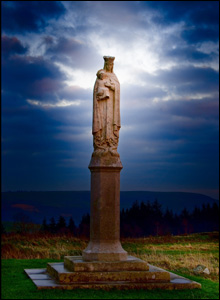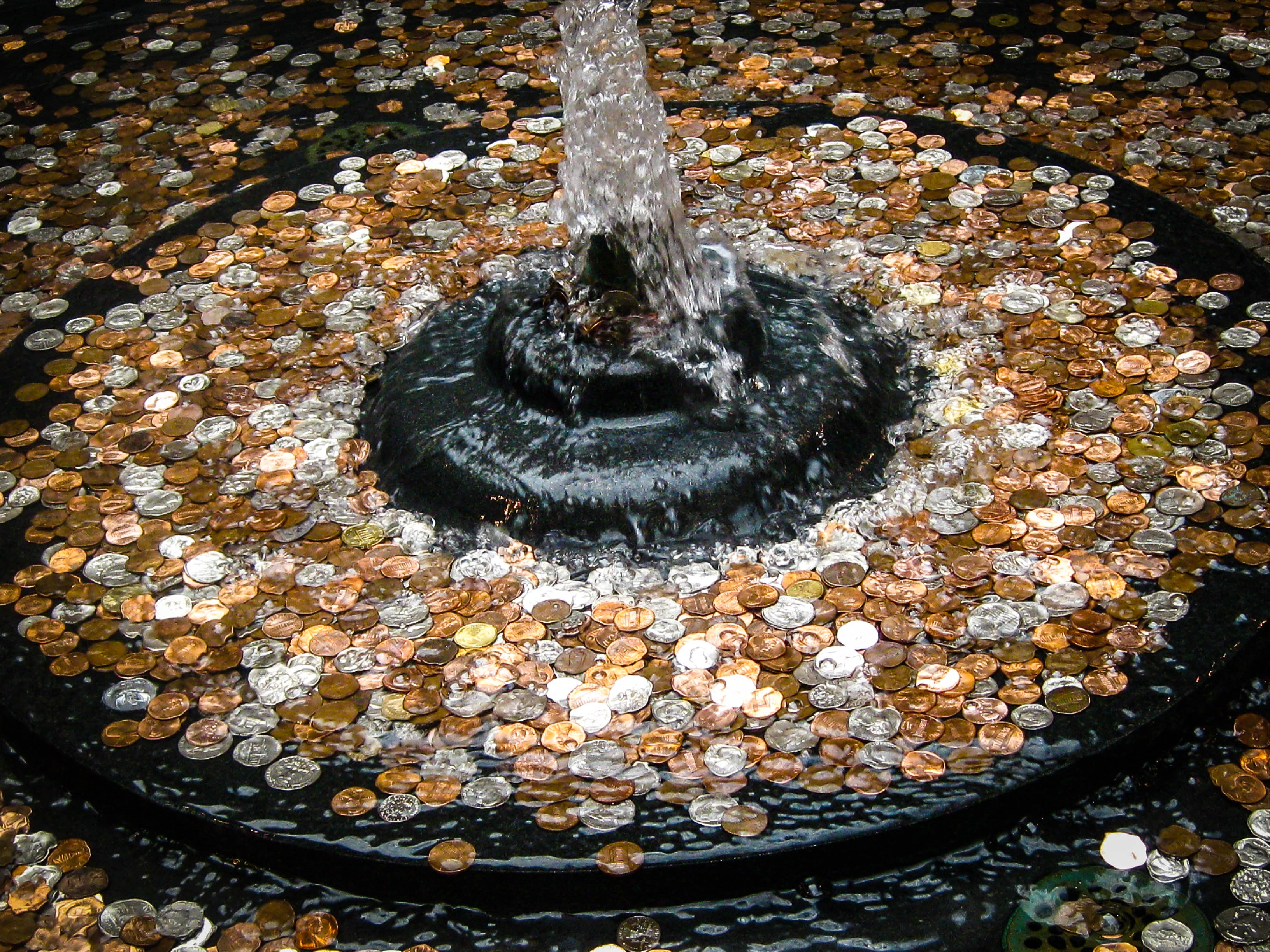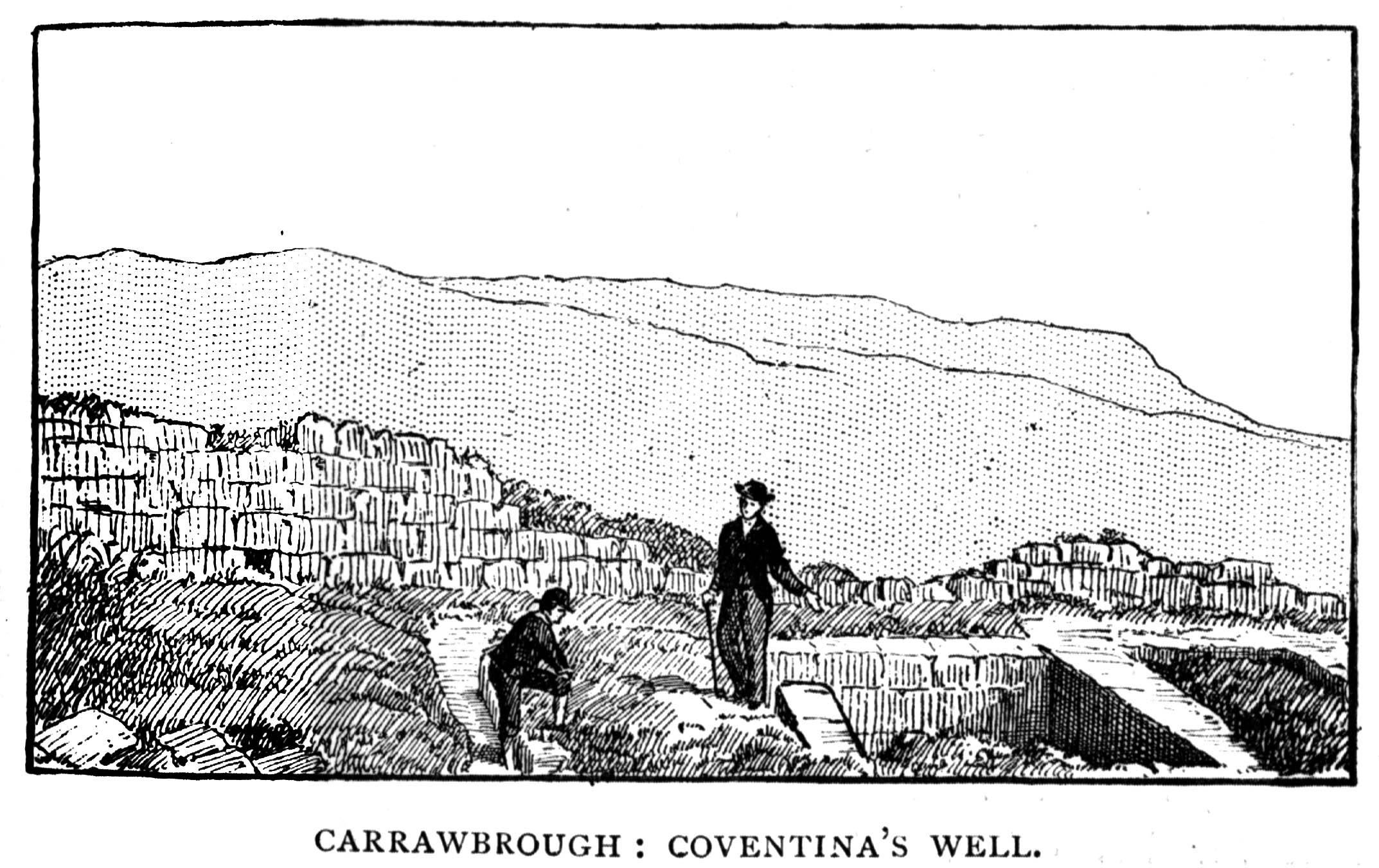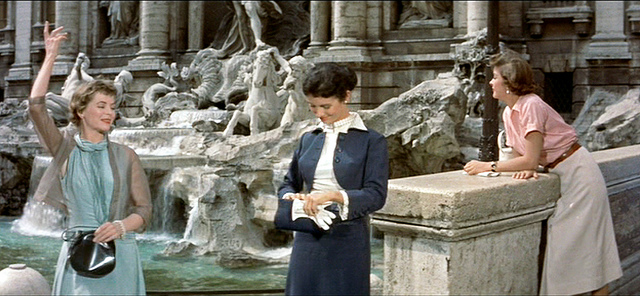Why Do We Throw Coins into Fountains?
Given how many fountains adorn the malls across America, the question of “Why” we have that tradition isn’t often asked. Children grow up tossing coins into fountains and are taught at a young age to make a wish as they do it. In most cases, even the parents don’t know why we have this tradition – it’s just something they did when they were young. In the following article we’re going to examine where this tradition started and how it has transformed over generations to the current toss-a-coin-make-a-wish scenario.
Looking back through history, it’s tough to place where this tradition started. What is key though, more-so than the fountain is the occurrence of water. Water is absolutely necessary to sustain life on Earth as we know it. It’s a simple fact that is easily overlooked because the majority of the developed world has easy access to clean, drinkable water. However, hundreds of years ago that was not the case. Tribes across Europe, Africa and Asia were on a constant hunt for potable drinking water. And the instance that they found a suitable watering hole, it was considered a gift from the Gods.
As was the custom in early times, providing an offering to the Gods was a common practice. Whether the offering was in thanks or in repentance, the offering was always something of value such as livestock. But in the case of fountains or wells, the people of the tribe would toss a coin in the well while sending up a prayer – the earliest version of making a wish.
One rather famous well that proves this theory of well/fountain offerings is the Coventina well in Northumberland county in the United Kingdom. This well dates back to the Roman Empire and was dedicated to Coventina, the Romano-British Goddess of Well and Springs.
When the well was first discovered, scientists uncovered more than 16,000 coins from different eras of the Roman Empire. What’s interesting about the find is that it corroborates the theory that coins were used to honor the Gods and even more interesting is that the denominations of the coins were small amounts. Instead of full dollars, euros or pounds, the coins were of fractional denominations such as 5 or 10 cents. Much like modern times, ancient people were willing to part with small amounts of money instead of larger denominations.
 Although fountains these days are synonymous with coins, it was always that way. In Oxford, England, The Well of Pen Rhys called for visitors to toss clothing in. It was widely believed that the well had healing powers and if your clothing carried disease, simply tearing off a piece of the clothing, or putting a pin or button in the water would cure your ailments. This belief stayed alive well throughout the 18th century.
Although fountains these days are synonymous with coins, it was always that way. In Oxford, England, The Well of Pen Rhys called for visitors to toss clothing in. It was widely believed that the well had healing powers and if your clothing carried disease, simply tearing off a piece of the clothing, or putting a pin or button in the water would cure your ailments. This belief stayed alive well throughout the 18th century.
In modern times, the belief in Gods watching over fountains, or wells containing healing powers is not widely held, but the common practice of tossing coins in the water for a wish has survived over the course of hundreds of years.
One of the most popular wishing fountains, and arguably one of the most famous fountains in the world is the Trevi Fountain in Rome. The Trevi Fountain is the terminal point of three roads of the modern Aqua Vergine, which is a revival of the historic Aqua Virgo – which was named for the Goddess who would lead soldiers to water when they were thirsty and exhausted. Legends had it that drinking from the fountain, or tossing a coin in the fountain would provide you with good health. Nowadays, that tradition has evolved into tossing a coin with your right hand, over your left shoulder, which will lead you back to Rome some day.
That idea of the method of tossing in a coin was popularized in the 1954 film, Three Coins in The Fountain. The film was popularized even more because it contained an Academy Award-winning song by the same name. The following traditions that were spawned by the movie, still exist today:
1: Throw 1 coin into the Trevi Fountain and you will return to Rome one day.
2. Throw 2 coins into the Trevi Fountain and you’ll fall in love with a Roman.
3. Throw 3 coins into the Trevi Fountain and you’ll marry that Roman.
Since the popularization of this movie there is an estimated 3,000 Euros thrown into the Trevi Fountain each DAY.
These coins can’t sit in the fountain forever, so the fountain is shut down for one hour each day so the coins can be swept out and collected by the Roman Catholic charity Caritas. They use the coins to subsidize a supermarket for Rome’s poor and needy.













Nicely researched, and informative. Thanks! =^[.]^=
WOW Chris B,
I have been studying coins since 1971 and have never considered why people throw coins in fountains. This article is so informative and I enjoyed the read. Thank you for it.
TVP
Some person, who OWNED a fountain, started the rumor that is was good luck.
😉
agree.